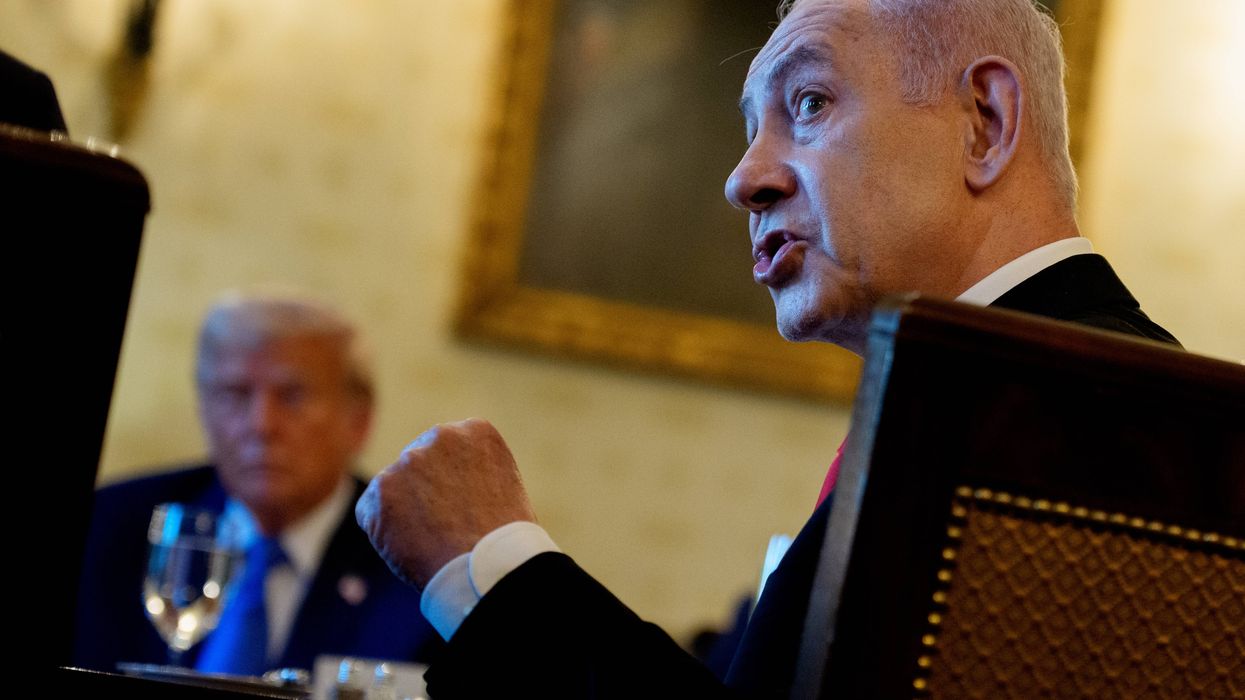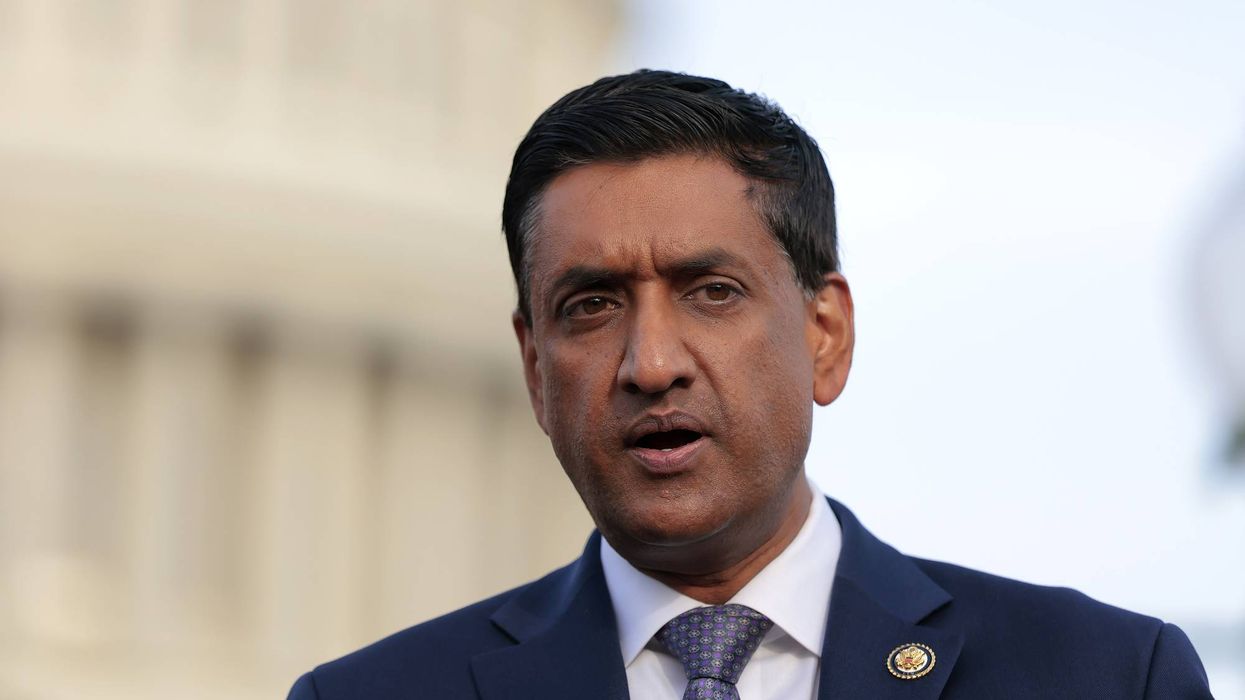March, 09 2015, 09:30am EDT

Greenpeace Canned Tuna Ranking Finds Most Brands Fail Consumers on Ocean Safe Tuna
In its first-ever US canned tuna ranking, Greenpeace found that the vast majority of the tuna sold in the American market fails to meet fundamental sustainability standards. Among the worst performers are the big three brands, Bumble Bee, Chicken of the Sea and StarKist, representing a combined 80 percent of the US tuna market.
WASHINGTON
In its first-ever US canned tuna ranking, Greenpeace found that the vast majority of the tuna sold in the American market fails to meet fundamental sustainability standards. Among the worst performers are the big three brands, Bumble Bee, Chicken of the Sea and StarKist, representing a combined 80 percent of the US tuna market.
The ranking, included in Greenpeace's 2015 Canned Tuna Shopping Guide, looked at 14 well-known US national and private label supermarket brands and concluded that most do not have adequate measures in place to address both sustainability and the human welfare and labor issues that plague the industry. Eight of the 14 tuna brands evaluated received a failing score, including retail giants Walmart and Kroger.
"Consumers should know that popular and trusted canned tuna brands are contributing to ocean destruction at an alarming rate," said Greenpeace Seafood Markets Lead Graham Forbes. "While the biggest brands have thus far refused to offer sustainable tuna, the silver lining here is that other companies are stepping up to provide ocean safe options for their customers."
Wild Planet, American Tuna and Ocean Naturals received the top scores and were identified as the best choices for US tuna consumers - all offering ocean safe products. Each brand has a comprehensive approach to sustainability and sources from operations striving to be fair and socially responsible. Whole Foods finished near the top tier for selling only more responsibly caught tuna. Hy-Vee and Trader Joe's also ranked near the top, but continue to have some outstanding sustainability concerns.
The tuna ranking evaluated the sourcing policies and practices of the 14 brands, including whether the fishing method used to catch their tuna harms other marine life, whether they avoid shark finning, and whether they can trace their products back to the sea. In addition, Greenpeace examined how equitable and socially responsible the brands are. Poor working conditions are systemic in the tuna industry, and in the worst cases, human rights violations and slave labor take place.
The US is the largest market for canned tuna in the world and the primary global market for albacore tuna, a species mostly caught by longlines. Longline fishing consists of multiple hooks on a single line that can stretch for miles. The longline fishery is less regulated and can be highly destructive when measures are not employed to mitigate bycatch. Thousands of tons of seabirds, sea turtles, sharks and other marine life are hooked and then left to die on the lines. Up to 35 percent of the longline catch can be species other than tuna, many of which are already vulnerable.[1]
"Unfortunately, dolphin safe does not mean ocean safe. Turtles, sharks and other vulnerable ocean life are collateral damage in tuna fisheries that supply the US market," added Forbes. "The big players have a responsibility to join forward-thinking brands in building a more responsible tuna industry. As the market continues to shift, selling products that are bad for our oceans will be bad for business."
The US tuna ranking is part of a global Greenpeace campaign to transition toward fair and sustainable global tuna fisheries for our oceans and ocean-dependent people. In addition to the ranking, Greenpeace developed a "Decoding the Can" page to assist consumers with the various labels and options on a tuna can. To view the entire Canned Tuna Shopping Guide, please visit: https://www.greenpeace.org/usa/tunaguide.
Greenpeace is a global, independent campaigning organization that uses peaceful protest and creative communication to expose global environmental problems and promote solutions that are essential to a green and peaceful future.
+31 20 718 2000LATEST NEWS
Trump Slashes US Humanitarian Aid Pledge as His Cuts Kill Hundreds of Thousands Globally
One tracker estimates that the Trump administration's assault on foreign aid programs has killed more than 700,000 people so far—a majority of them children.
Dec 29, 2025
The Trump administration on Monday announced a commitment of $2 billion to United Nations humanitarian assistance efforts, a fraction of what the US has previously provided as President Donald Trump's foreign aid cuts continue to wreak deadly havoc worldwide.
The US State Department said the funds will be tied to reform efforts pushed by the administration, as it warns individual UN agencies to "adapt, shrink, or die"—all while giving massive handouts to billionaires.
"The agreement requires the UN to consolidate humanitarian functions to reduce bureaucratic overhead, unnecessary duplication, and ideological creep," said the State Department.
Al Jazeera reported that the reduced commitment "is a sharp contrast to the assistance of up to $17 billion the US has provided as the UN’s leading funder in recent years."
"The $2 billion will create a pool of funds that can be directed at specific countries or crises, with 17 countries—including Bangladesh, the Democratic Republic of the Congo, Haiti, Syria, and Ukraine—initially targeted," the outlet noted. "Afghanistan is not included on the list, nor is Palestine, which officials say will be covered by money included in Trump’s yet-to-be-completed Gaza plan."
The Associated Press observed that "even as the US pulls back its aid, needs have ballooned across the world: Famine has been recorded this year in parts of conflict-ridden Sudan and Gaza, and floods, drought, and natural disasters that many scientists attribute to climate change have taken many lives or driven thousands from their homes."
The new funding pledge comes after the Trump administration's lawless dismantling of the US Agency for International Development (USAID), which was the United States' primary body for foreign aid.
Experts say the destruction of USAID at the hands of billionaire Elon Musk and others inside the Trump White House has killed hundreds of thousands of people across the globe—and could kill millions more in the coming years.
A conservative tracker maintained by Boston University epidemiologist Brooke Nichols estimates that the Trump administration's assault on foreign aid programs has killed more than 700,000 people—a majority of them children.
In a blog post for the Center for Global Development earlier this month, Charles Kenny and Justin Sandefur wrote that "while quantification is difficult, there is little doubt many people have died as a result, and without action many more will die in the future."
Keep ReadingShow Less
Netanyahu to Press for 'Another Round of War With Iran' in Meeting With Trump This Week
Amid a growing rift between Israel and the White House, one foreign policy analyst says the meeting "will signal whether Washington is prepared to continue underwriting open-ended escalation."
Dec 28, 2025
As Israeli Prime Minister Benjamin Netanyahu heads to Mar-a-Lago to meet with US President Donald Trump on Monday, amid a growing rift with the president and his advisers, reports say he'll seek to push the US back toward war with Iran.
Last week, NBC News reported that at the meeting, "Netanyahu is expected to make the case to Trump that Iran’s expansion of its ballistic missile program poses a threat that could necessitate swift action" and that "the Israeli leader is expected to present Trump with options for the US to join or assist in any new military operations."
"Netanyahu plans to press Donald Trump for US backing for another round of war with Iran, now framed around Iran’s ballistic missile program," said Sina Toossi, a senior fellow at the Center for International Policy. “Netanyahu’s pivot to missiles should therefore be read not as the discovery of a new threat, but as an effort to manufacture a replacement casus belli after the nuclear argument collapsed."
He noted criticisms levied against Netanyahu by Yair Golan, chair of the Democrats, a center-left party in Israel, earlier this week: "How is it possible that last June, at the end of the war with Iran, Benjamin Netanyahu solemnly declared that ‘Israel had eliminated Iran’s nuclear threat and severely damaged its missile array’; and that this was a ‘historic victory’—and today, less than six months later, he is running to the president of the United States to beg for permission to attack Iran again?" Golan said.
Iran is just one of several areas the two will likely discuss on Monday. According to Israeli officials who spoke to the Washington Post, Netanyahu also reportedly wants Trump to "take a tougher stance on Gaza and require that Hamas disarm before Israeli troops further withdraw as part of the second phase of Trump’s 20-point peace plan."
The chief of Israel's armed forces suggested earlier this week that its occupation of more than half of Gaza would be permanent, but walked those comments back after reported behind-the-scenes outrage in the White House. Meanwhile, Trump—invested in his image as a peacemaker—has reportedly balked at Israel's routine violations of the ceasefire agreement he helped to broker in October.
Near-daily strikes have resulted in the death of at least 418 Palestinians, according to the Gaza Media Office. Meanwhile, Israel's continued blockade of humanitarian aid has left hundreds of thousands of people—displaced from homes destroyed by Israeli bombing—to languish in the cold without tents. Desperately needed fuel, food, and medicine have entered the strip at far lower numbers than the ceasefire agreement required.
As Axios reported on Friday, Trump's advisers increasingly fear that Netanyahu is intentionally slow-walking and undermining the peace process in hopes of resuming the war.
Netanyahu also seeks Trump's continued backing of Israel's territorial expansion in Syria. Earlier this month, the Israel Defense Forces (IDF) pushed through a UN-monitored demilitarized zone between Israeli and Syrian-held positions in the Golan Heights, which Israel illegally occupies.
This push into southern Syria went against the wishes of the Trump administration, which feared it could destabilize the Western-backed government that rules in Damascus following the ouster of former President Bashar al-Assad.
Israel has also routinely struck Lebanon in violation of the US-brokered ceasefire it signed with Hezbollah in late 2024, with bombings becoming a near-daily occurrence in December. Last month, the UN reported that at least 127 civilians, including children, had been killed in Israeli strikes since the ceasefire began.
"Netanyahu’s visit unfolds against a backdrop of unresolved fronts, with widening disputes with Washington over the second phase of the Gaza ceasefire, including postwar governance, reconstruction, and Turkish involvement," Toossi said. "At the same time, Israel is seeking greater latitude to escalate again against Hezbollah in Lebanon, an end to US accommodation of Syria’s new leadership, and firm assurances on expanded military aid."
“Taken together, Netanyahu’s visit is less about resolving any single crisis than about postponing strategic reckoning," he continued. "The outcome will signal whether Washington is prepared to continue underwriting open-ended escalation, or whether this meeting marks the beginning of clearer limits on Israel’s regional strategy.”
Keep ReadingShow Less
Khanna Hits Back as Silicon Valley Oligarchs Threaten Primary Challenge Over California Billionaires Tax
"We cannot have a nation with extreme concentration of wealth in a few places, but where... healthcare, childcare, housing, education is unaffordable," the San Francisco lawmaker said.
Dec 28, 2025
US Rep. Ro Khanna defended California's proposed tax on extreme wealth Saturday after a pair of prominent Silicon Valley venture capitalists threatened to launch a primary bid for his California House seat.
The proposal, which advocates are gathering signatures to place on the ballot in 2026, would impose a one-time 5% tax on those with net worths over $1 billion to recoup about $90 billion in Medicaid funds stripped from the state by this year’s Republican budget law. The roughly 200 billionaires affected would have five years to pay the tax.
While higher taxes on the superrich are overwhelmingly popular with Americans, the proposal has rankled many of California’s wealthiest residents, as well as California’s Democratic Gov. Gavin Newsom, who said earlier this month that he’s “adamantly” against the measure.
On Friday, the New York Times reported that two of the valley's biggest powerbrokers—venture capitalist and top Trump administration ally Peter Thiel and Google co-founder Larry Page—were threatening to reduce their ties to California in response to the tax proposal.
This has been a common refrain from elites faced with proposed tax increases, though data suggests they rarely follow through on their threats to bail on cities and states, even when those hikes are implemented. Meanwhile, the American Prospect has pointed out that the one-time tax would still apply to those who moved out of the Golden State.
Khanna (D-Calif.), who is both a member of the House's progressive faction and a longtime darling of the tech sector, has increasingly sparred with industry leaders in recent years over their reactionary stances on labor rights, regulation, and taxation.
In a post on X, the congressman reacted with derision at the threats of billionaire flight: "Peter Thiel is leaving California if we pass a 1% tax on billionaires for five years to pay for healthcare for the working class facing steep Medicaid cuts. I echo what [former President Franklin D. Roosevelt] said with sarcasm of economic royalists when they threatened to leave, 'I will miss them very much.'"
Casado, who donated to Khanna’s 2024 reelection campaign according to OpenSecrets, complained that “Ro has done a speed run, alienating every moderate I know who has supported him, including myself.”
"Beyond being totally out of touch with [the moderate] faction of his base, he’s devolved into an obnoxious jerk," Casado continued. "At least that makes voting him the fuck out all the more gratifying."
Casado's post received a reply from another former Khanna donor, Garry Tan, the CEO of the tech startup accelerator Y Combinator.
"Time to primary him," Tan said of Khanna.
Tan, a self-described centrist Democrat, has never run for office before. But he is notorious for his social media tirades against local progressives in San Francisco and was one of the top financial backers of the corporate-led push to oust the city's liberal former district attorney, Chesa Boudin, in 2022.
Casado replied: "Count me in. Happy to be involved at any level."
Progressive commentator Krystal Ball marveled that “Tech oligarchs are now openly conspiring against Ro Khanna because he dared to back a modest wealth tax.”
So far, neither Casado nor Tan has hinted at any concrete plans to challenge Khanna in 2026. If they did, defeating him would likely be a tall order—since his sophomore election in 2018, a primary challenger has never come within 30 points of unseating him.
But Khanna still felt the need to respond to the brooding tech royals. He noted that he has "supported a modest wealth tax since the day I ran in 2016," which prompted another angry retort from Casado, who accused the congressman of "antagonizing the people who made your district the amazing place it is" with a tax on billionaires.
Khanna hit back at his critics with a lengthy defense of not just the wealth tax, but his conception of what he calls "pro-innovation progressivism."
"My district is $18 trillion, nearly one-third of the US stock market in a 50-mile radius. We have five companies with a market cap over $1 trillion," Khanna said. "If I can stand up for a billionaire tax, this is not a hard position for 434 other [House] members or 100 senators."
"The seminal innovation in tech is done by thousands, often with public funds," Khanna continued. "Yes, we need entrepreneurs to commercialize disruptive innovation... But the idea that they would not start companies to make billions, or take advantage of an innovation cluster, if there is a 1-2% tax on their staggering wealth defies common sense and economic theory."
"We cannot have a nation with extreme concentration of wealth in a few places, but where 70% of Americans believe the American dream is dead and healthcare, childcare, housing, education is unaffordable," he concluded. "What will stifle American innovation, what will make us fall behind China, is if we see further political dysfunction and social unrest, if we fail to cultivate the talent in every American and in every city and town... So, yes, a billionaire tax is good for American innovation, which depends on a strong and thriving American democracy."
Keep ReadingShow Less
Most Popular


